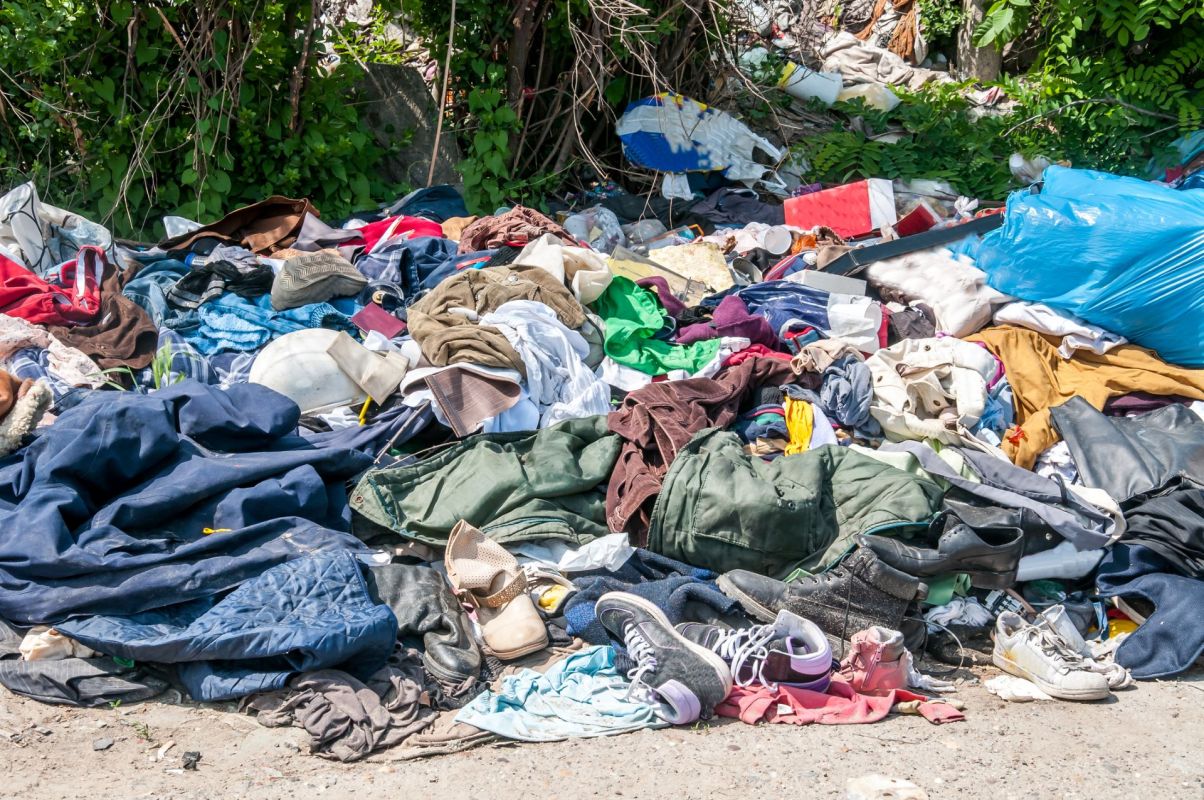Ten million-plus tons of plastic enter our oceans every year. We all know to reduce our use of plastic water bottles, but what about our clothes?
About 60% of all clothing is made of synthetic fabrics from virgin plastic. (Virgin plastics are made from new plastic, versus recycled plastics). It's no wonder fashion companies worldwide have come under attack for using plastic to make their fabrics.
One solution that has surfaced is biodegradable plastic (or bioplastic). Bioplastics, in contrast to petroleum-based plastics, are designed to naturally break down in the environment, supposedly making them safer for everyone. Unfortunately, new research has shown bioplastics aren't living up to the hype.
What's happening?
Bioplastics claim to offer a solution that marries the versatility of plastics with a reduced environmental impact, but a recent study seems to refute that claim.
Polylactic acid, a common bioplastic material, was found to not break down in the environment as quickly as expected. Research showed that bioplastics like polylactic acid showed no signs of biodegrading after 400 days in the ocean. What seemed to be a promising solution to our plastic problem isn't looking so promising after all.
Why is this research finding concerning?
The news that bioplastics are not as biodegradable as we hoped means we can't rely on biodegradable plastics to fix our plastic problem.
Bioplastic fibers will remain in the environment, accumulating in organisms and causing more damage for longer periods of time. Additional research has shown that polylactic acid can be toxic to marine organisms like jellyfish.
Fashion companies may continue to use bioplastics as an environmentally friendly alternative. Proper education is necessary to prevent proper handling of bioplastics, which can break down with specialized equipment.
However, consumers often don't know the difference between biodegradable and compostable, and this news has the potential to confuse the situation even more.
What is being done about this?
The fashion industry still needs to shift away from harmful fibers. For now, we can't count on bioplastics as a silver bullet. If companies continue to use bioplastics, there needs to be improved education and instruction about appropriate disposal of these materials.
If you want to reduce the plastic entering our environment, you can. Choosing clothing made from natural fibers, like cotton, linen, and wool, reduces the need for synthetic clothing.
But sometimes you can't find those materials, and some synthetic fibers, like polyester, have benefits that natural fibers don't. In this case, you can buy synthetic fibers second hand, and make sure to donate your clothing to people who will actually use it, instead of letting it go to landfill.
Join our free newsletter for cool news and actionable info that makes it easy to help yourself while helping the planet.









